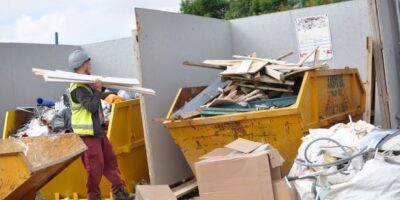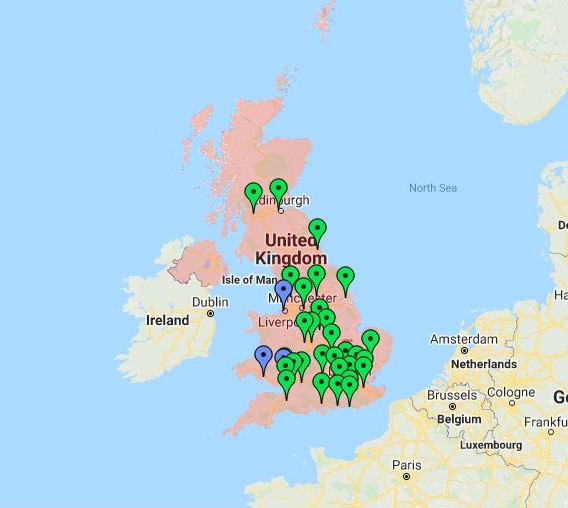Moving to a circular economy: waste is a resource
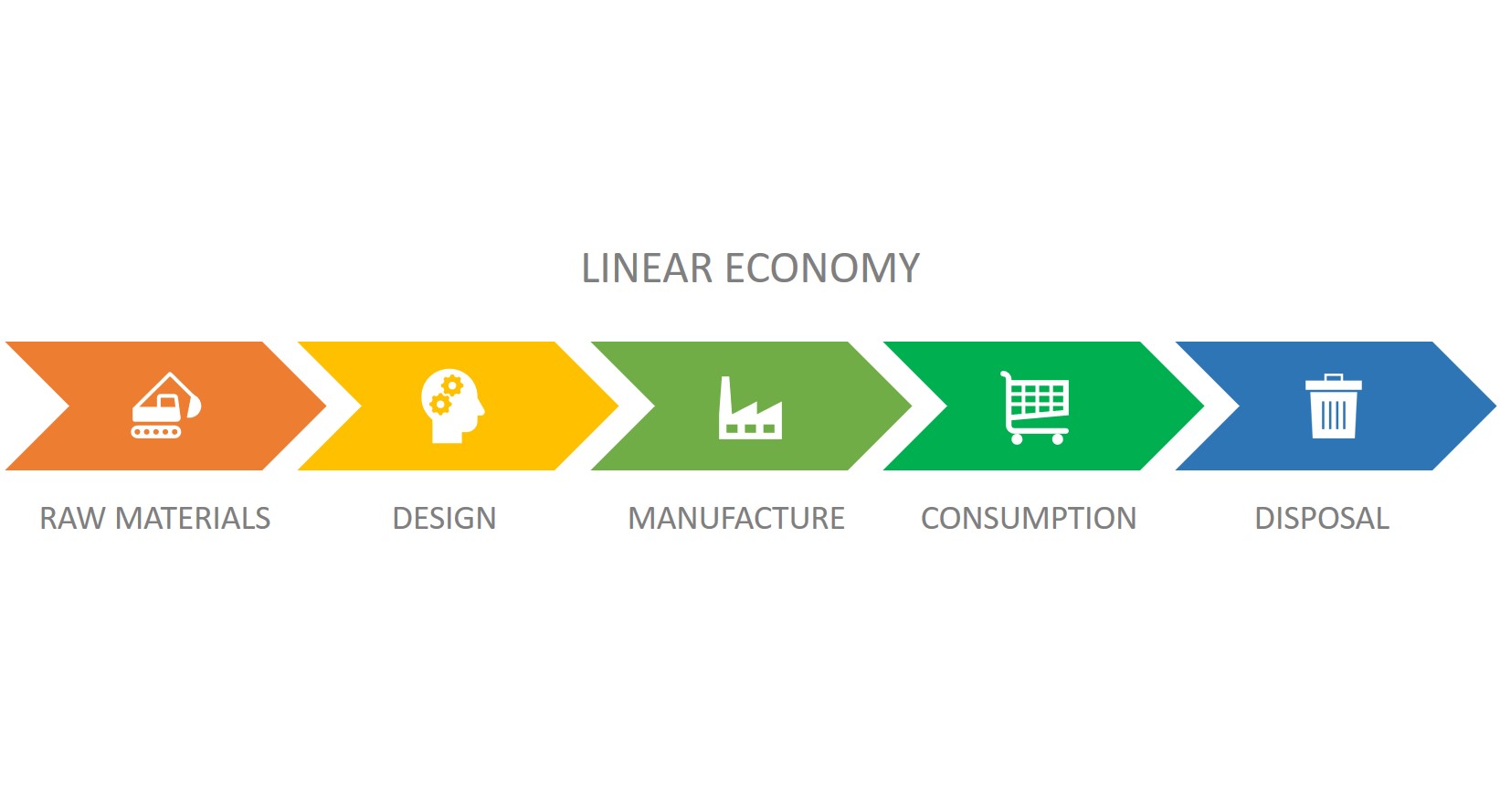
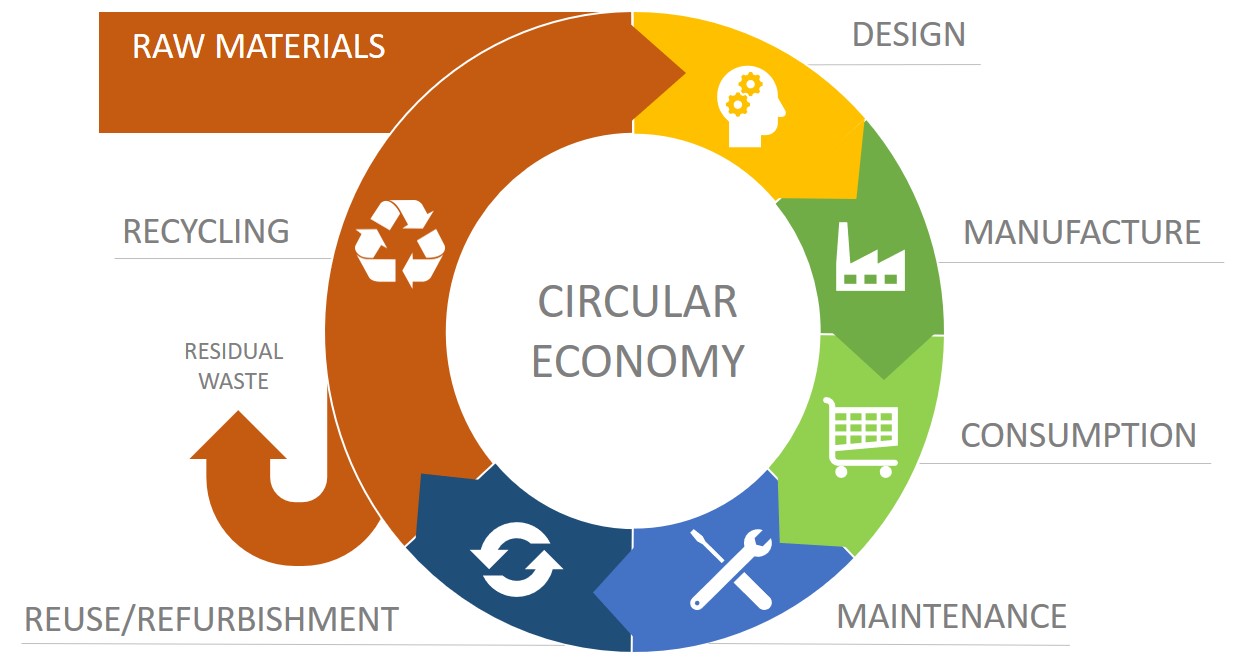
It is estimated that by 2050 there could be more waste plastic in the ocean than fish and that if everybody used resources at the same rate as an average EU resident, we would need at least 3 planets to sustain ourselves.
What is the Purpose of Improving Efficiency and Minimising Waste?
The true cost of waste in a project is often underestimated.
It is estimated by Zero Waste Scotland that 13% of raw materials ordered are discarded unused. With many main contractors struggling to make 2% profit margins we need to understand that by reducing waste we will increase our efficiency and profitability.
Most waste is produced on-site through: over-ordering; ordering the wrong thing; damage by mishandling materials; off-cuts; inadequate storage of materials; and unnecessary packaging of construction materials, e.g. plastics and cardboard. All of this before we even consider the cost of the processes and the amount of Carbon involved!
In addition, reducing our consumption of raw materials and being more efficient with what we use results in a wide range of environmental and social benefits associated with the consumption of fewer resources and the disposal of waste products. Clearly there is a cost saving too.
The waste hierarchy
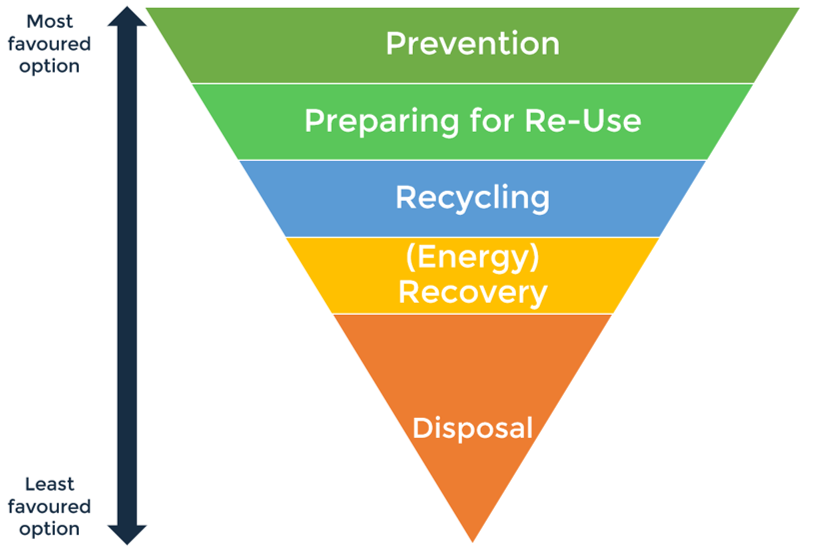
We can all play a role in tackling these problems. As a subcontractor, simple changes on-site to reduce, reuse and recycle your construction waste can bring many benefits. This is what we refer to as the waste hierarchy, a useful guide for the sustainable treatment of waste, prioritising waste treatment in the following way:
- Prevention
- Preparing for reuse
- Recycling
- Other recovery (such as energy recovery)
- Disposal, usually to landfill
A paradigm shift is needed when we think about the resources we use, away from a linear ‘take – make – dispose’ approach to a cycle which uses products or materials that have reached “end of life” as inputs to produce the next generation of products that we need. There is also the need for thinking laterally and choosing different materials or different product/service models that bring resource efficiency benefits.
A simple construction example of this might be using aggregates made from old crushed concrete or blast furnace slag, instead of virgin aggregates from a quarry or dredged from the sea, in the production of new concrete.
Prepare for Digitised Waste Tracking
It has been announced by DEFRA that Digitised Waste Tracking will become mandatory from April 2025. This decision presents both a major challenge and a significant opportunity for our members and partners to improve their accuracy, reporting and actions towards improved waste management, resource efficiency and a circular economy. The School has already begun preparing for this date, which will see the biggest change in the way waste is managed and reported in decades.
How to Improve Waste Efficiency
A short animation on how to prevent and reduce waste on site.
Material Exchange Platforms (MEPs) are schemes whereby excess materials and products can be exchanged from one user to another, reducing the volume of waste to landfill.
Use the map to find out the locations of MEPs in the UK and to find out more information on exchanging material. You may have surplus stock from a recently finished project, or are looking for second hand upcycled furniture; these are some examples of how you might use MEPs.
If you are aware of any MEPs that are should be added or deleted from the map, or information that should be revised, please complete this form.
Waste and Resource Efficiency
Waste: The Waste Hierarchy
Video
Offsite Manufacture
Offsite for Site Managers – Workshop
Event or Workshop
Waste and Resource Efficiency
Packaging Optimisation in the Housebuilding Sector Report
Document/Presentation
Waste and Resource Efficiency
Introduction to Waste
E-learning module
5S Workplace Organisation
Construction to Production: Getting the best out of modern methods of construction – Workshop
Event or Workshop
Waste and Resource Efficiency
The Circular Economy
E-learning module
Waste and Resource Efficiency
Environmental impact of higher recycled content
Document / Presentation
Waste and Resource Efficiency
Protocol for reusing structural steel
Document/Presentation
